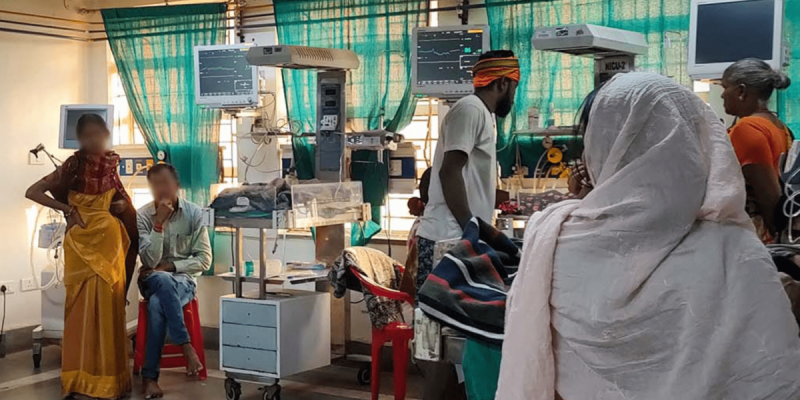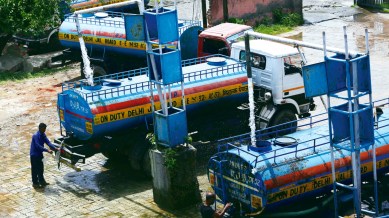- Courses
- GS Full Course 1 Year
- GS Full Course 2 Year
- GS Full Course 3 Year
- GS Full Course Till Selection
- MEP (Mains Enrichment Programme) Data, Facts
- Essay Target – 150+ Marks
- Online Program
- GS Recorded Course
- NCERT- First Ladder
- Polity
- Geography
- Economy
- Ancient, Medieval and Art & Culture AMAC
- Modern India, Post Independence & World History
- Environment
- Governance
- Science & Technology
- International Relations and Internal Security
- Disaster Management
- Ethics
- Current Affairs
- Indian Society and Social Issue
- CSAT
- 5 LAYERED ARJUNA Mentorship
- Public Administration Optional
- ABOUT US
- OUR TOPPERS
- TEST SERIES
- FREE STUDY MATERIAL
- VIDEOS
- CONTACT US
COASTAL AQUACULTURE AUTHORITY OR CAA BILL, 2023
COASTAL AQUACULTURE AUTHORITY OR CAA BILL, 2023
08-08-2023
Latest Context
The Lok Sabha passed an amendment bill to decriminalise the offences committed in carrying out coastal aquaculture activities and ensure ease of doing business.
Key Points
- The bill amends the CAA Act of 2005, which created the CAA to regulate coastal aquaculture-related operations.
- Coastal Aquaculture was exempted from the ban under the Coastal Regulatory Zone (CRZ) Notification of 1991 by the CAA Act of 2005.
- The National Green Tribunal ruled in 2022 that coastal aquaculture is not exempt from the CRZ Notifications issued in 2011 and 2019 under the CAA Act of 2005.
- Coastal aquaculture is farming shrimp, prawns, fish or other aquatic life in saline or brackish water.
-
Key highlights:
- Under the CRZ, coastal aquaculture and associated activities are allowed. As a result, it will still solely be subject to CAA Act regulation.
- Allows seaweed cultivation in creeks and backwaters inside the CRZ and nucleus breeding in no-development zones.
-
Additional functions of CAA:
- Set parameters for aquaculture unit inputs and effluent outflow.
- Pharmacologically active chemicals, antibacterial agents, and other drugs that might be harmful to human health should all be banned.
- Secretary-Member of the Authority: been chosen by the central government to serve as the CAA's chief executive officer.
- Decrminalises violations of the law and lowers the fine to one lakh.
Potential in India
- After China, India is the world's second-largest aquaculture nation and the third-largest producer of fish overall.
- The importance of the fishing and aquaculture industries was made clear by India's Blue Revolution.
- The industry is regarded as a sunrise sector and is anticipated to have a big impact on the Indian economy soon.
- Indian fisheries have recently seen a paradigm change from inland to marine-dominated fisheries, with the latter becoming a significant contribution to fish output from 36% in the middle of the 1980s to 70% in the recent past.
Initiatives
- The Government of India approved the Pradhan Mantri Matsya Sampada Yojana (PMMSY) flagship programme in May 2020 as part of the Aatmanirbhar Bharat COVID-19 relief package to bring about the Blue Revolution through the sustainable and responsible development of the fisheries sector.
- The Pradhan Mantri Matsya Kisan Samridhi Sah-Yojana (PMMKSSY) sub-scheme, which was unveiled in the Union Budget for 2023–2024, aims to increase the wages and incomes of fishers, fish dealers, and micro- and small-scale businesses operating in the fisheries industry.
Challenges
- In terms of good infrastructure, technological adoption, and financial inclusion, India is still lagging behind its international competitors.
- Farmers and other interested parties have occasionally expressed concern over subpar exports and a decline in market pricing.
Way Forward
- To solve the problems facing the industry, scientists and aquaculture farmers have proposed a comprehensive strategy including several stakeholders and government agencies.
- For the management of fisheries throughout the nation, scientists emphasise the necessity for comprehensive law and an inter-state structure.
- The answer is a co-management approach that includes fishermen's active engagement.
Must Check: IAS Coaching Centre In Delhi



